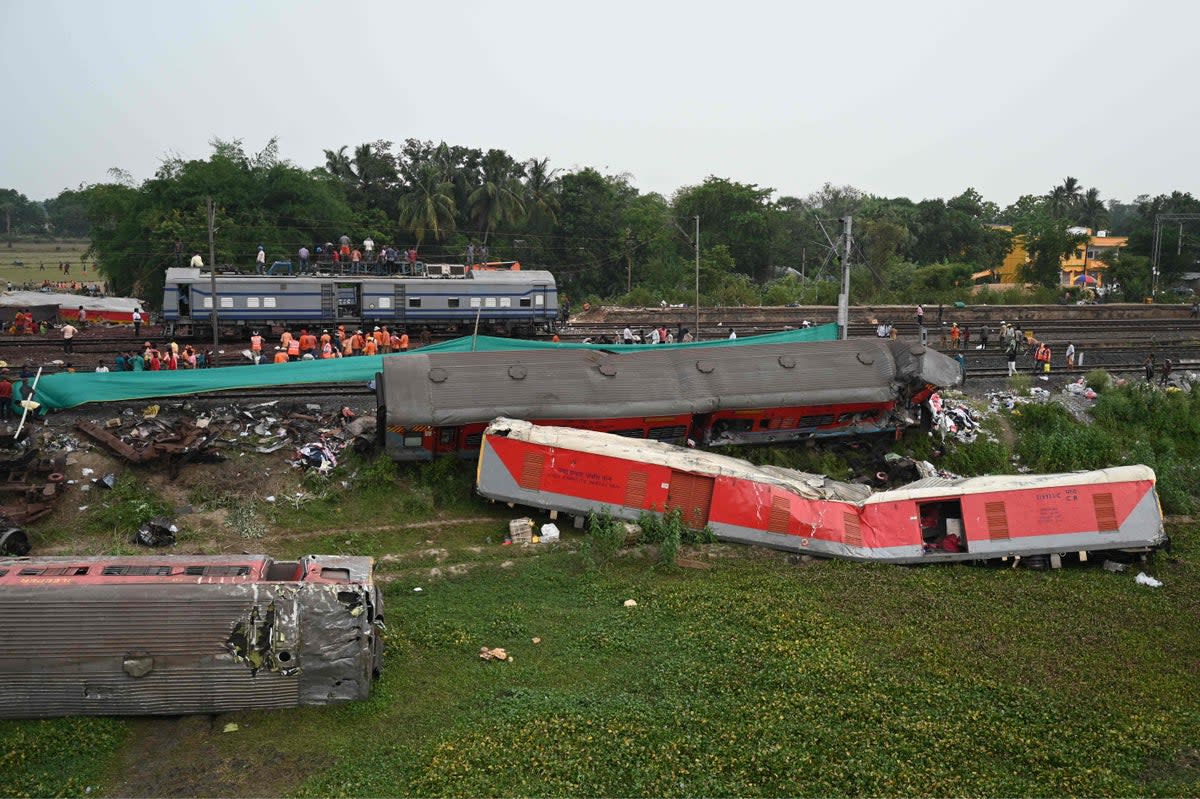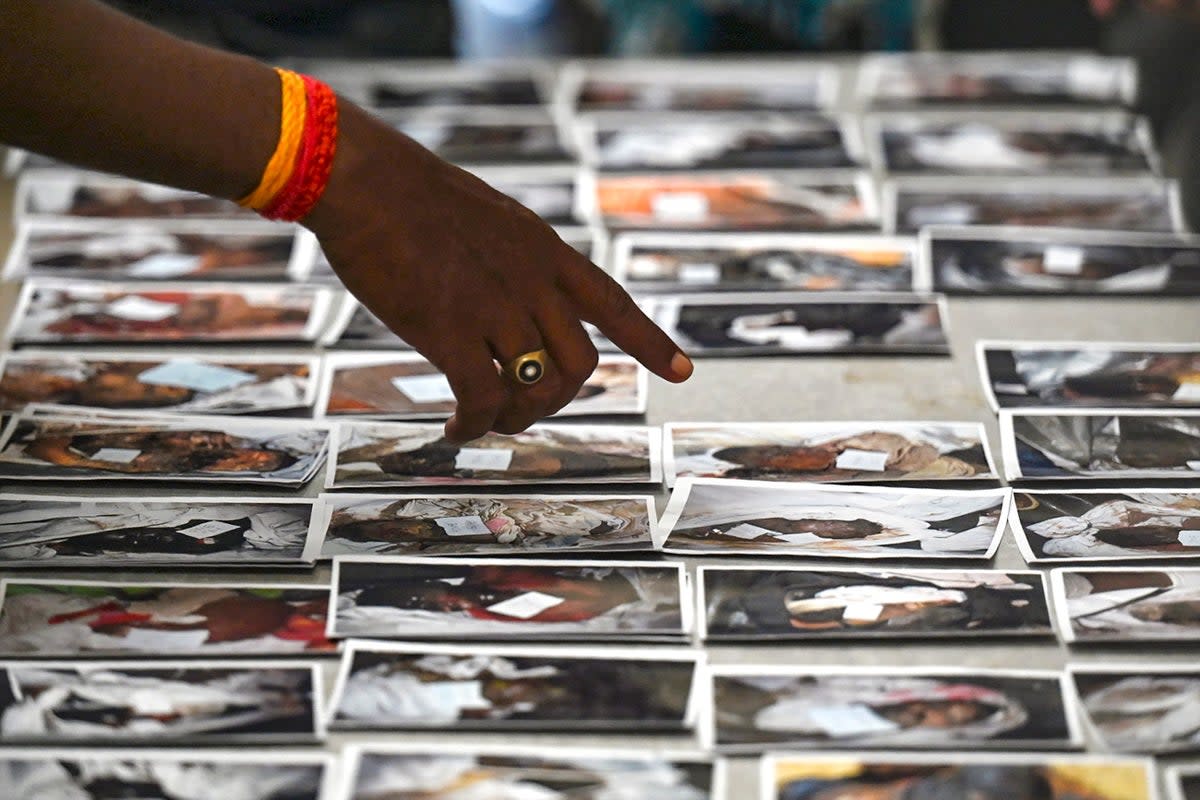‘Deliberate interference’ caused India’s worst train accident this century, railway officials say
India’s deadliest train crash this century was caused by “deliberate interference” with a “fail-proof” electronic system, according to the country’s railway officials.
As many as 278 people, many of them migrant labourers, were killed and 1,100 injured in the collision of three trains near Balasore city in Odisha state on 2 June.
The death toll was revised on Tuesday after three more of those who were severely injured succumbed at hospitals. Witnesses and political leaders have questioned the official death toll and raised questions over whether it was kept artificially low given the vast number of those critically injured.
A probe into the accident was handed to the country’s premier investigating agency, the Central Bureau of Investigation (CBI), which will examine if the derailment happened from criminal negligence or sabotage.
Top railways officials claim there is clear evidence of deliberate tampering with the electronic signalling system.
A preliminary investigation by India’s railways ministry identified “signal failure” as the root cause of the accident.
Ministry officials conducting the initial probe spoke anonymously to the Times of India and found “deliberate interference” with the interlocking system operated from a cabin at the Bahanaga Bazar station that oversees the stretch of track.
They said they are hopeful that the CBI probe will help identify those responsible and their motive.
The electronic interlocking system prevents multiple trains from using or heading towards the same tracks. It was described as “fail-proof”, which means signals on the track will turn red and halt the movement of all the trains on the impacted line.
“So, unless there is deliberate interference in the system, it is not possible that a route that is set for the main line for a train is switched to the loop line,” the official told the newspaper.
The powerful triple collision happened after a high-speed passenger train packed with commuters was wrongly directed to a loop track where a freight train was already stationed.
The passenger train, the Coromandel Express, hit the freight train and derailed before its coaches slammed onto another passenger train going in the opposite direction.
The other train, the Yesvantpur-Howrah Superfast Express, was travelling from Bengaluru to Howrah city near Kolkata when its coaches were hit by the Coromandel Express, leading to scores of fatalities in the carriages of both trains.

The accident has sparked questions over the safety of India’s vast railways network – used by more than 22 million people every day – as prime minister Narendra Modi focused on the modernation of the country’s colonial-era railroad network.
Mr Modi faced flak for prioritising the construction of new high-speed trains, known as Vande Bharat, instead of addressing issues within the existing railroad network.
The railways are considered one of the cheapest means of travel across the country for millions of lower-income people.
Distraught relatives of passengers killed in the accident have travelled to Odisha state capital Bhubaneswar where the dead bodies and those injured have been brought.
Around 101 bodies of the 278 dead are yet to be identified, Eastern Central Railways official Rinkesh Ray told ANI.

“About 1,100 people were injured in the accident, out of which about 900 people were discharged after treatment. Around 200 people are being treated in various hospitals in the state,” he said.
The identification of remaining bodies has emerged as a worsening challenge for hospitals with each passing day as the overstretched mortuaries of some of the city’s biggest medical centres do not have refrigeration facilities.
Bijay Kumar Mohapatra, health director of Odisha, said authorities are trying to source iced containers to help preserve the bodies.
“Unless they are identified, a post mortem cannot be done,” Mr Mohapatra said, explaining that under state regulations no autopsy can be conducted on an unclaimed body until 96 hours have passed.
Bhubaneswar’s biggest hospital, the All India Institute of Medical Sciences (AIIMS), has begun the embalming process for the bodies, as the identification of victims is expected to take longer.
There are some cases where multiple families have claimed one body.

More than 12 anatomy and forensic experts from nearby states have been called in to begin the process to preserve the bodies for longer, reported the Indian Express.
The hospital’s large television screens are relaying photographs, including graphic images, of those who suffered terrible injuries to help family members identify their loved ones.
A detailed list was made of distinguishing features for each body, a senior police official told Reuters.
Family members of the victims have also been forced to take arduous journeys by planes, trains, buses and cars.
The trains had passengers from seven states spanning India – Assam, Bihar, Jharkhand, West Bengal, Tamil Nadu, Karnataka and Andhra Pradesh.
Meanwhile, a criminal complaint has been filed by the railway police for “death by negligence”.
It does not yet name any suspects, but has been filed under sections of India’s criminal code that deal with causing “grievous hurt” or “endangering life” by negligence.
